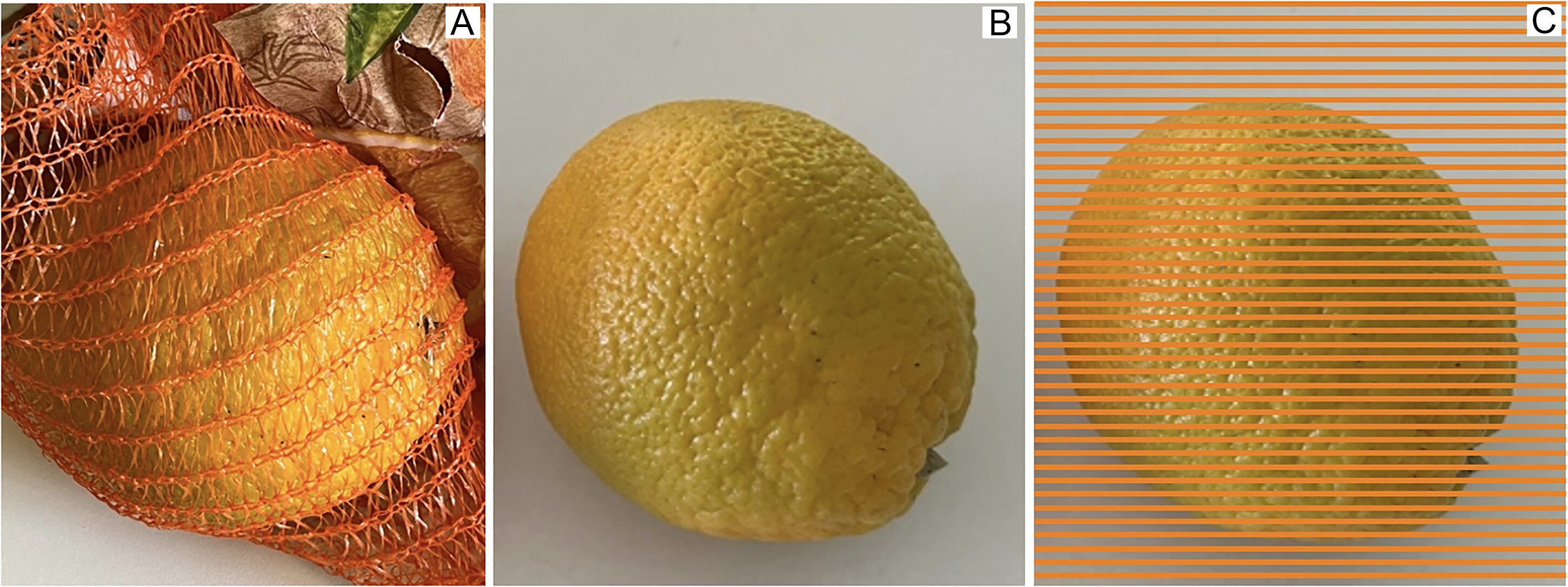Have you ever wondered why oranges are often sold in those strange red net bags? Well, it’s a sneaky trick used by food producers and supermarkets to fool your senses and (hopefully) make you buy more fruit.
A red or orange plastic net around the fruit helps to give the impression that the orange peel is a richer orange color, thereby making it look juicy and appealing to consumers. If the fruit is unripe, the colored net will also downplay its greenness and boost its orangeness, making it look ripe and more appetizing.
Similarly, lemons are often put in yellow net bags to enhance their natural color. If they were put in red bags, they’d look orangey and not as conventionally appealing.
The principle is based on the confetti illusion, a visual phenomenon where the perception of colors is strongly influenced by its surrounding context. In this optical illusion, a neutrally colored ball is placed within a grid of differently colored lines. When the lines of a particular color are in the foreground, the ball’s color appears to blend with that of the lines.
In a new study, psychologist Karl R. Gegenfurtner from Giessen University in Germany details how the supermarket’s orange bag utilizes the confetti illusion.
He writes: “I buy juice oranges from my favorite fruit seller Helga every Saturday at the local market. On a recent day, she did not have any nice ripe oranges, as could be expected during the German summer. Later, stopping by in a supermarket, there seemed to be an abundance of ripe oranges, and of course, I bought a bunch of them, handily packaged into an orange net for carrying.”
“At home, when I took out the oranges from the net, a miracle happened: each orange, beautifully colored within the net, turned into an abysmal shade of green!” Gegenfurtner continues.

An image highlighting the deceptive oranges of Gegenfurtner: Unripe green orange (A) within the orange net, (B) in isolated view, and (C) with a “Munker-net”.
Staying true to the scientific method, he also put forward evidence to verify his claim, in the form of photographs showing some deceitful oranges.
“We conclude that color assimilation alone provides a strong effect on color appearance, turning the greenish looking orange into a beautifully orange one. Needless to say that fruit vendors have realized this a long time ago. Looking around in typical supermarkets, it is easy to see that fruits and vegetables (e.g., lemons, onions, zucchini, or even potatoes) are typically packaged in nets that are of the color of perfect exemplars,” the study concludes.
The paper explains that the confetti illusion is based on the principle that our brains are programmed to process peripheral vision and color perception.
In essence, our brains aim to provide us with a smooth, seamless experience that can be understood as effectively as possible. Likewise, our visual system is wired to perceive uniformity and smooth transitions. When the red netting is placed over an orange, our brains merge adjacent colors to simplify what we see.
Whether or not this trick of deception actually increases the sales of oranges is not known, although we would encourage researchers to take on the task.
The new study is published in the journal i-Perception.
Source Link: The Real Reason Why Oranges Are Sold In Those Red Net Bags